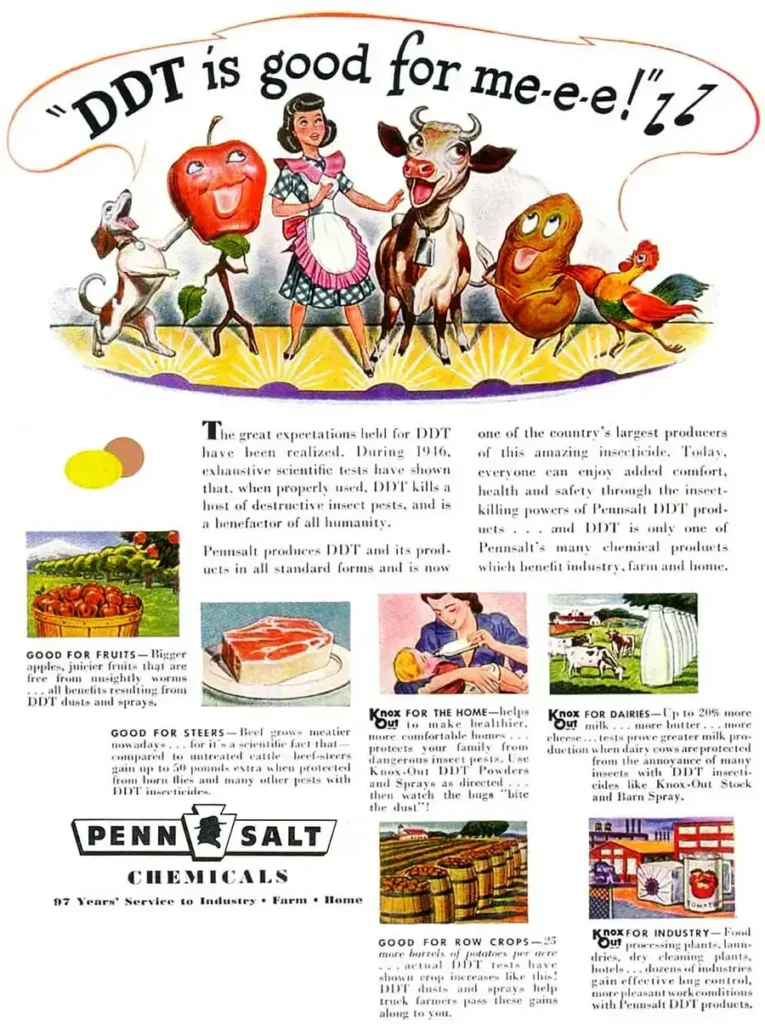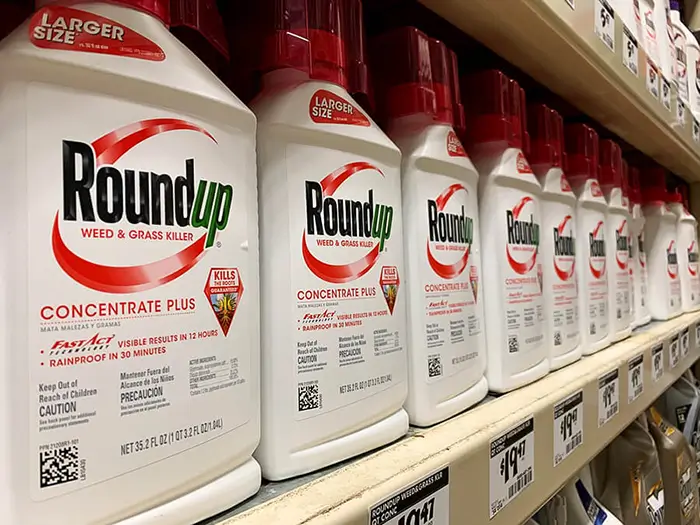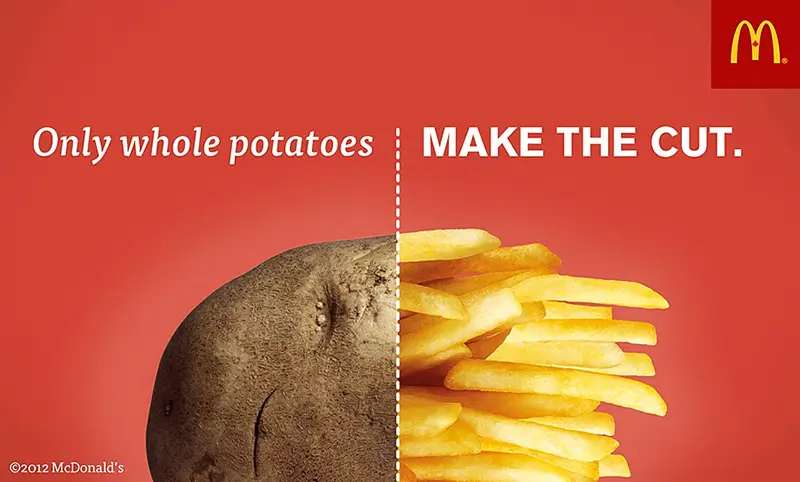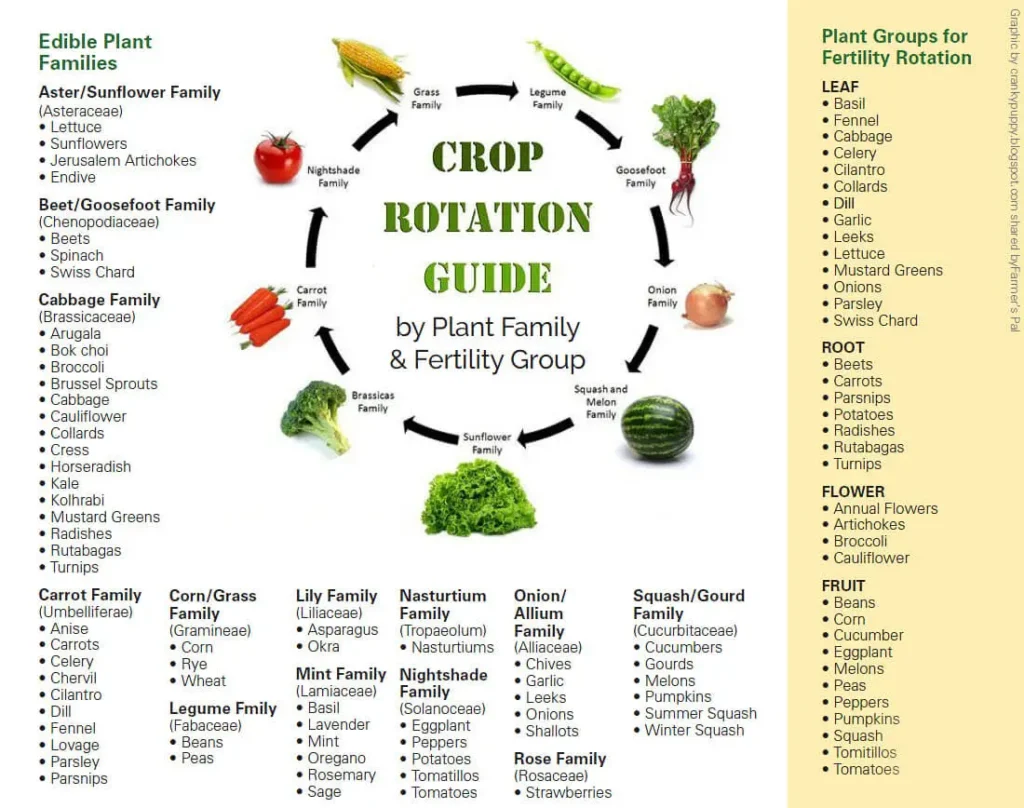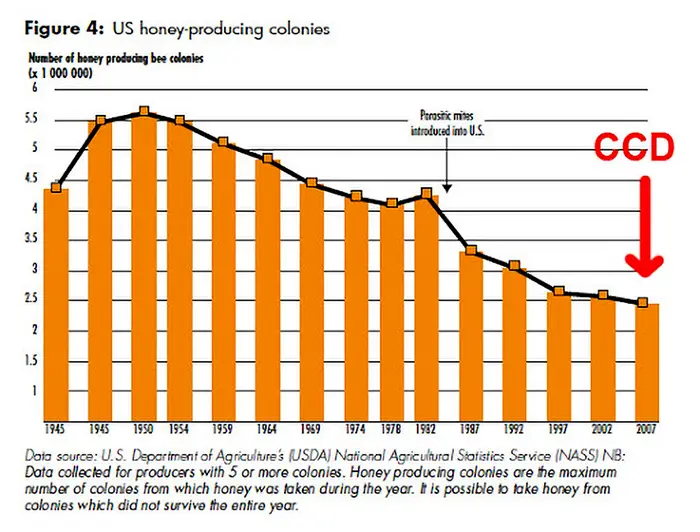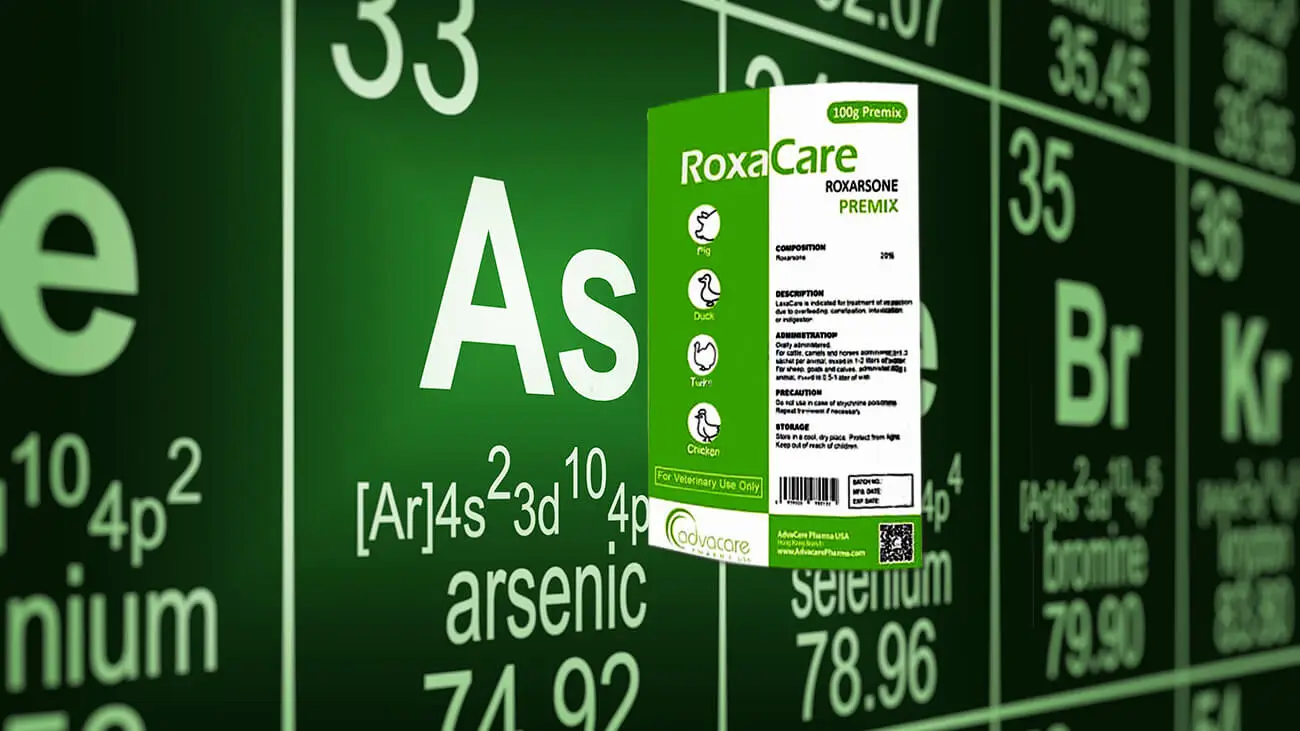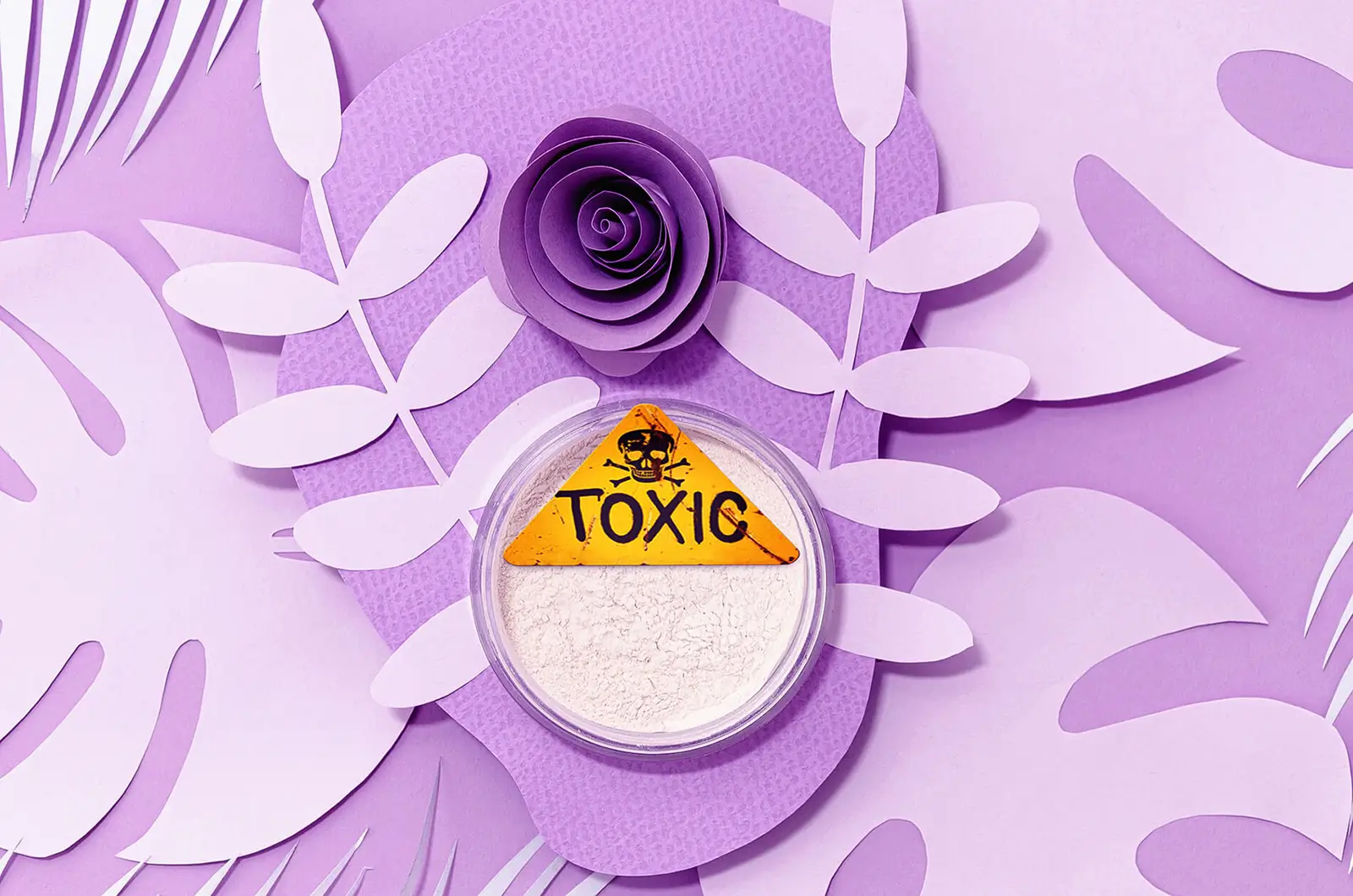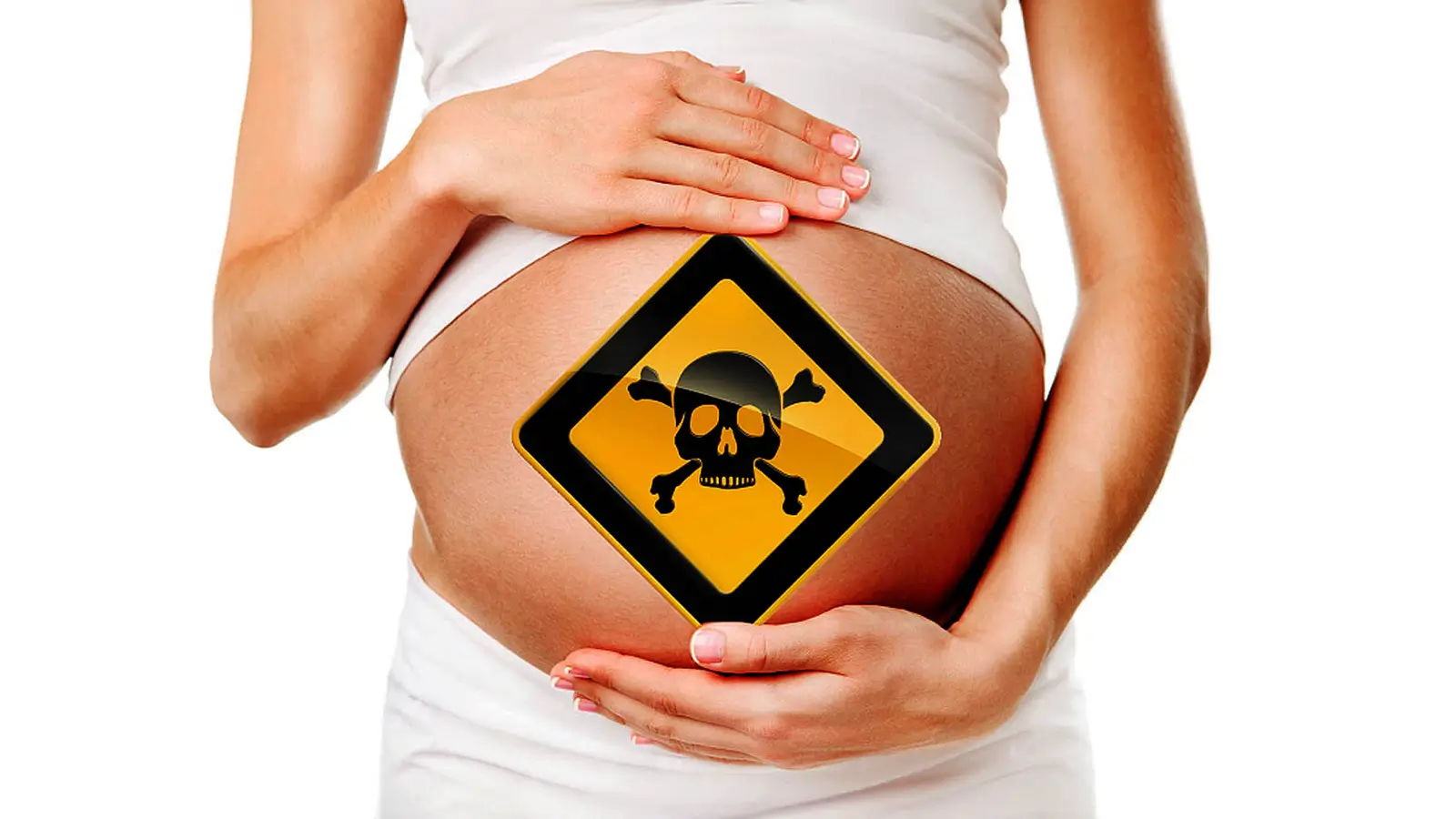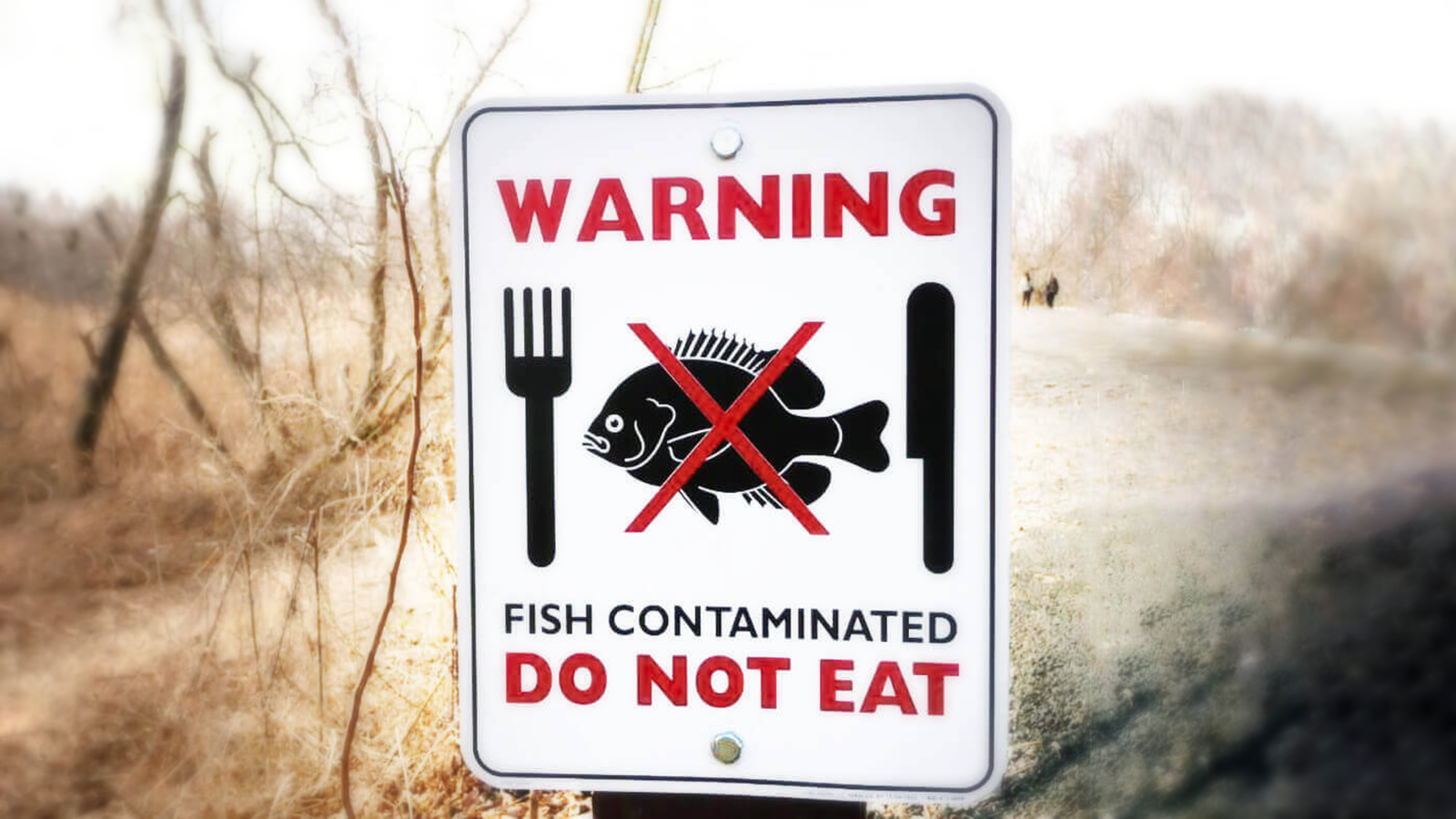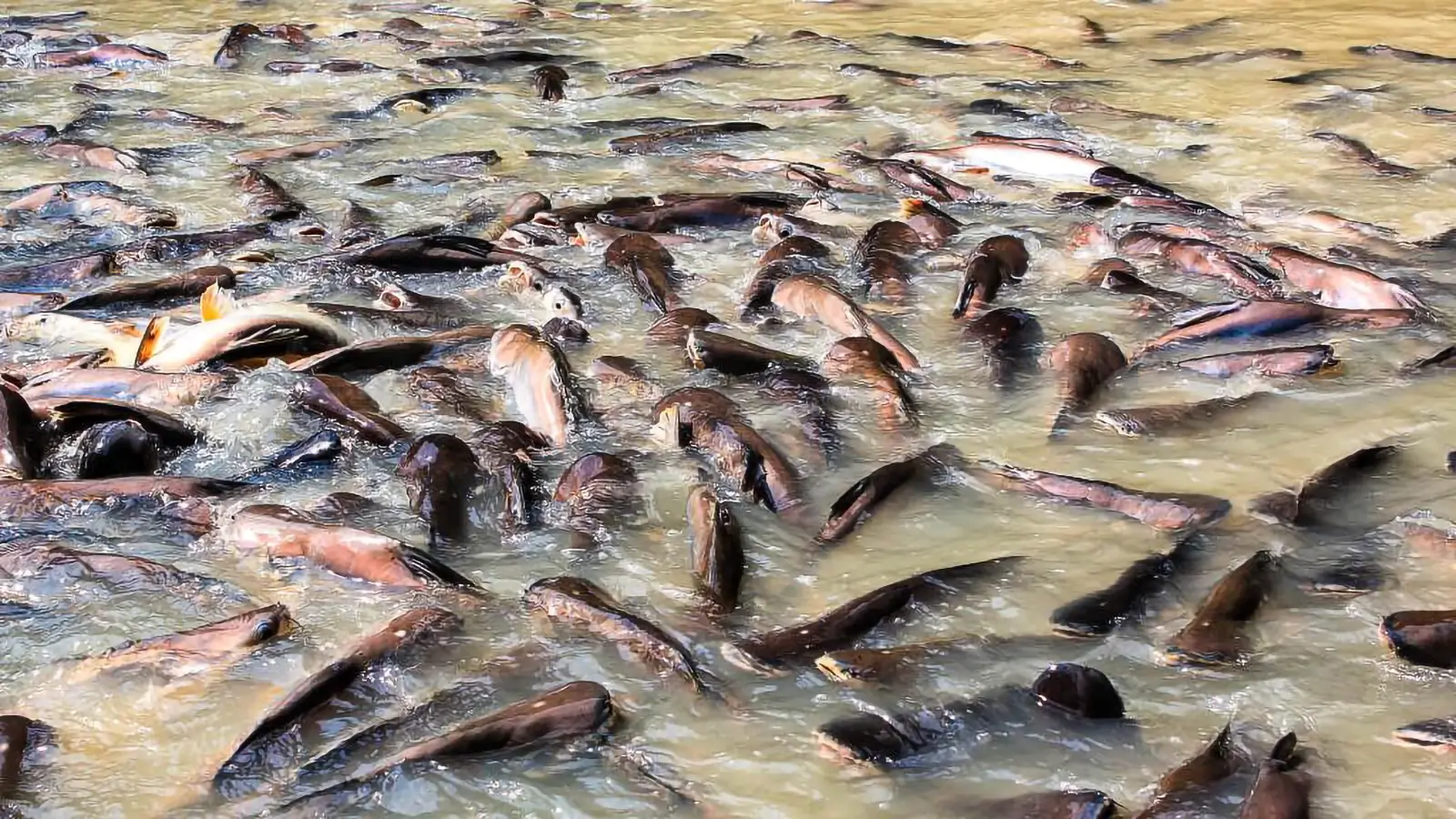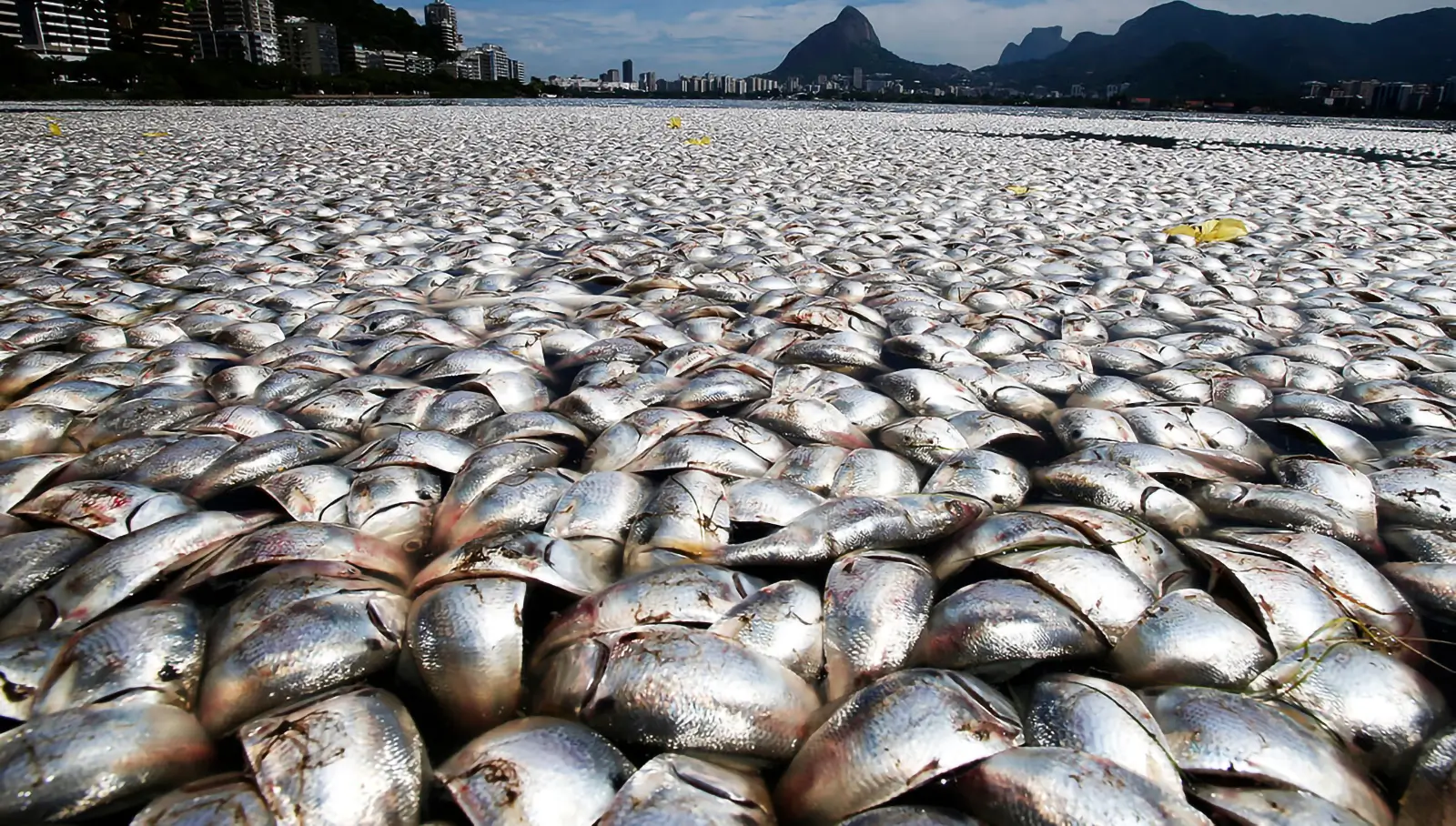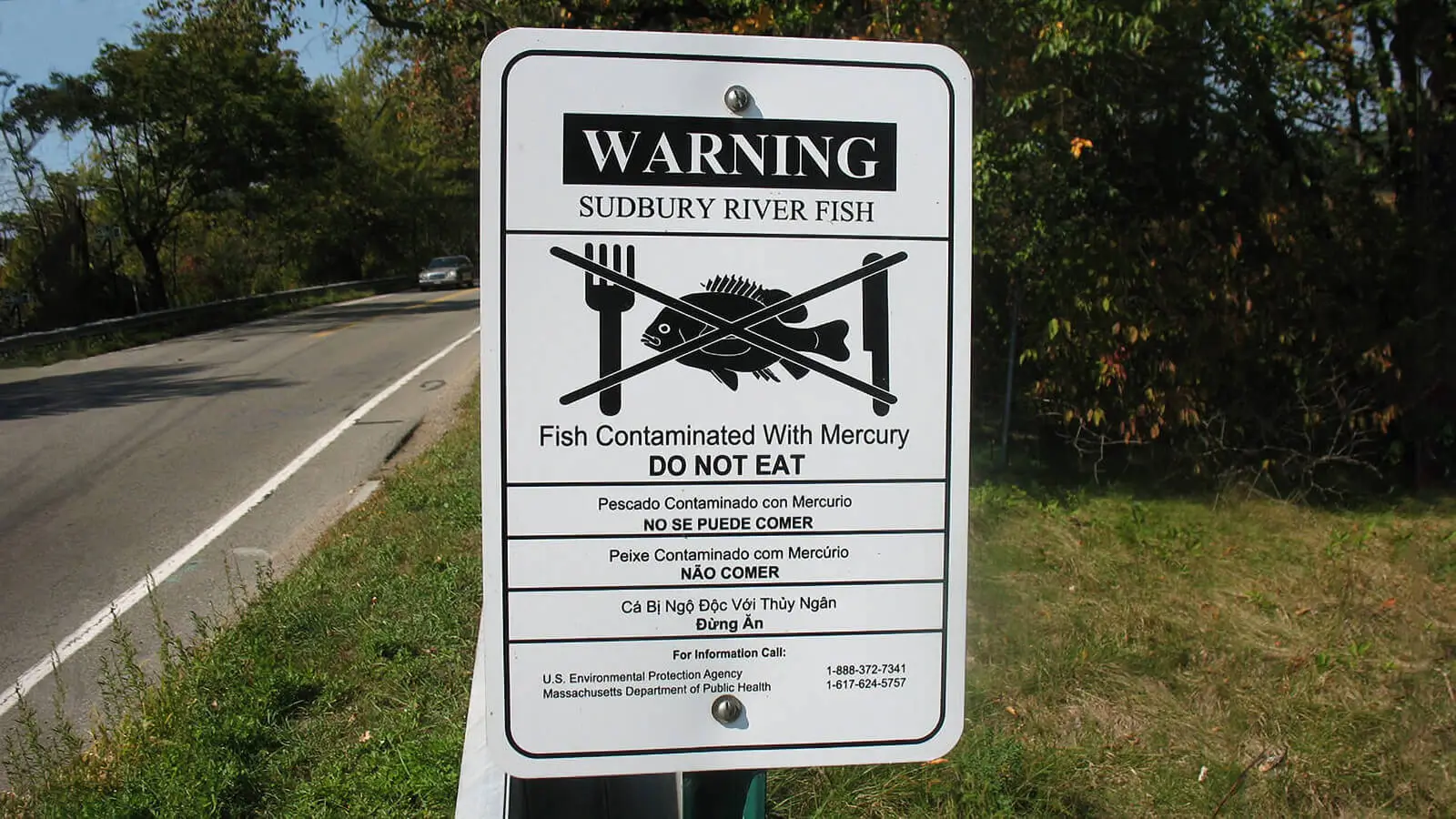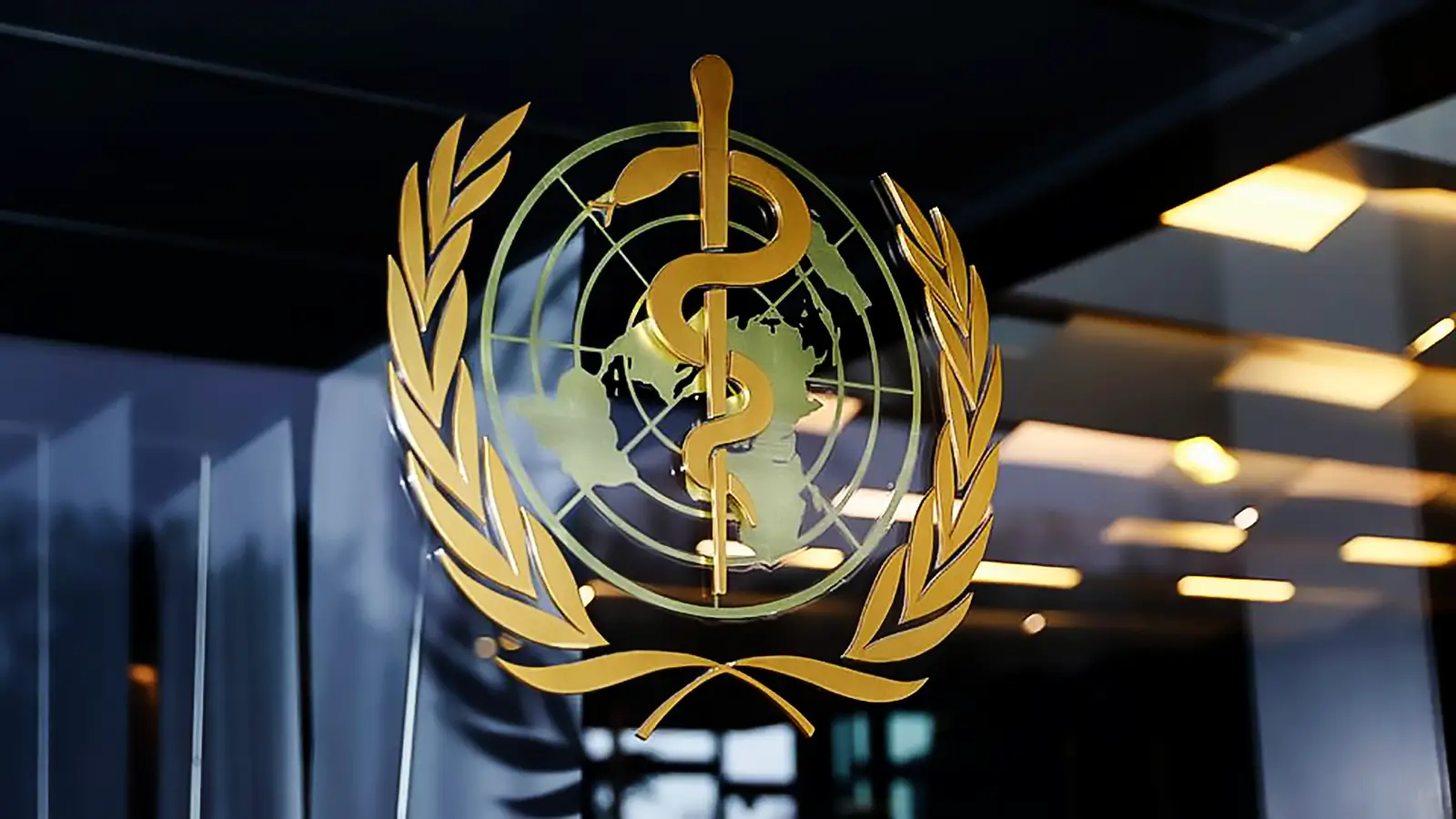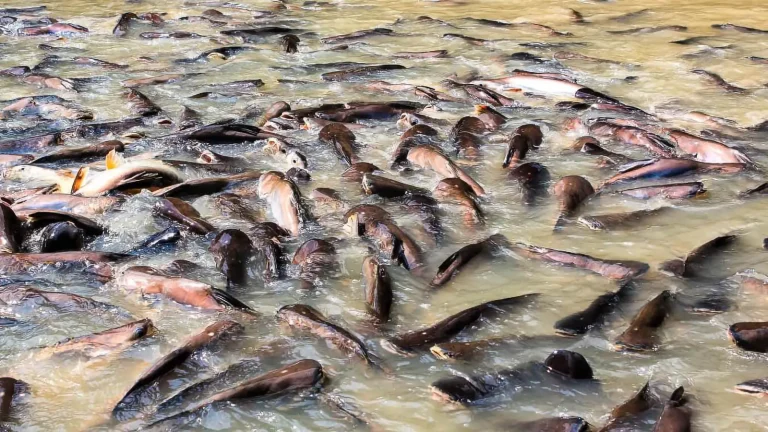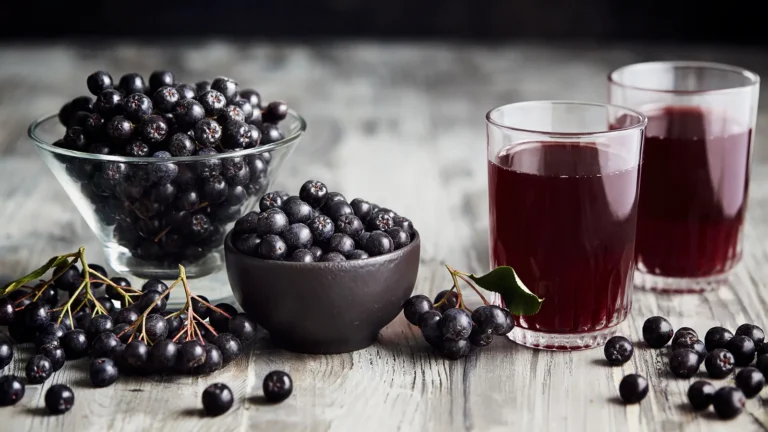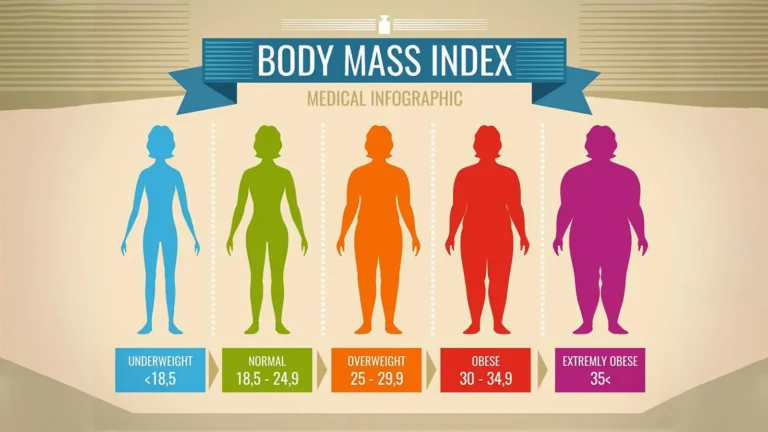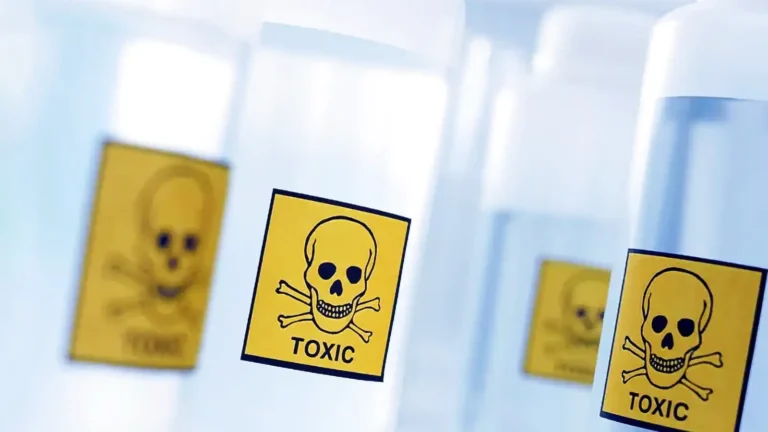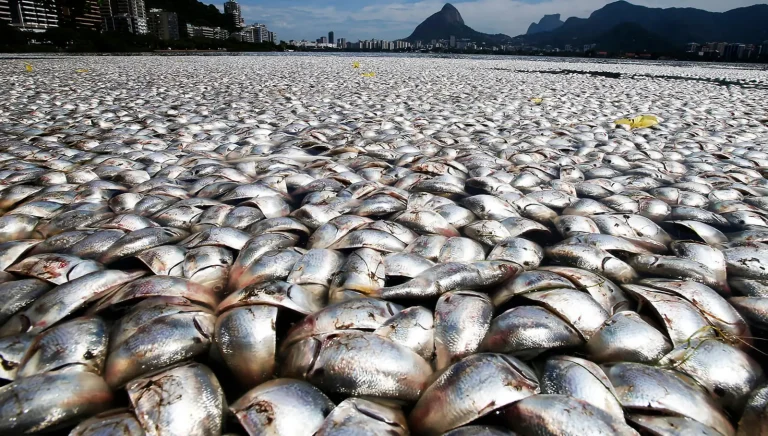Pesticidas, OGM e Sobrecarga Tóxica.
A exposição a pesticidas causa directamente cancro, defeitos de nascença, esterilidade e infertilidade, danos no cérebro e sistema nervoso, fígado, rins, e outros órgãos.
Milos Pokimica
Escrito por: Milos Pokimica
Revisto Clinicamente Por: Dr. Xiùying Wáng, M.D.
Actualizado em 9 de Junho de 2023Todos os pesticidas são semelhantes. Alguns são mais tóxicos, outros menos, mas todos são tóxicos. Não existe hoje um único pesticida que seja promotor de saúde. O DDT, por exemplo, é agora uma substância proibida em muitas partes do mundo, mas já não o era em tempos. O governo aprovava o produto, e a indústria química empurrava-o agressivamente. Permaneceu maciçamente apoiado durante um período prolongado pelo governo e pela indústria. Um tipo de substância milagrosa. A arma diabólica da ciência moderna mata milhares de milhões de insectos e salva milhões de seres humanos. A solução final para o paludismo e outras doenças que transportam insectos.
Os pesticidas são neurotoxinas para os insectos mas não para os humanos. O DDT nos insectos abre canais de iões de sódio nos neurónios, fazendo com que disparem espontaneamente, o que leva a espasmos e eventual morte. Tudo o que o insecto precisa de fazer é caminhar sobre a superfície tratada. Na mente do cientista, tratava-se apenas de uma neurotoxina para insectos. Eles não podiam considerar a probabilidade de que pudesse fazer outras coisas a longo prazo. Um grande pedaço de pesticidas utilizados hoje em dia é muito pior do que o DDT.
Uma outra razão pela qual o DDT foi proibido é que durante 30 anos foi utilizado em excesso e os insectos tornaram-se resistentes a ele. Acontece num ambiente quando é introduzido um veneno.
Alguns insectos sobrevivem e multiplicam-se. As características genéticas dos sobreviventes serão mais adaptadas contra o mesmo tipo de pesticidas. O pesticida utilizado pela primeira vez terá o impacto mais significativo e causará mais danos. No entanto, alguns insectos que sobrevivem irão transportar os seus genes para a frente. Com o tempo, as gerações vindouras serão capazes de resistir mais aos seus efeitos e, eventualmente, de se tornarem tolerantes. Como os mosquitos na África do Sul. Quanto mais tempo um produto químico for utilizado, mais resistentes os insectos se tornarão. É a mesma história que as estirpes de bactérias resistentes a antibióticos. Quando isto acontece, os venenos mais eficazes e mais potentes, e tóxicos, têm de ser utilizados pelos agricultores. Isso irá repetir o ciclo. Novos compostos são normalmente mais caros, pelo que o custo económico se tornará mais elevado e são também cada vez mais tóxicos. Isso gera um nível de poluição mais elevado e, portanto, deteriora ainda mais o equilíbrio global do ecossistema.. A elevada taxa de reprodução dos insectos significa que dentro de algumas décadas eles podem tornar-se tolerantes, mas e você?
Os pesticidas escorrerão para águas subterrâneas e ribeiros e rios. Isso irá afectar a biologia de muitas espécies de peixes, aves, mamíferos, e outros animais numa cadeia alimentar, acabando por acabar também no seu corpo.
Os organismos geneticamente modificados são criados principalmente por causa disto, de modo que pesticidas como Roundup podem ser utilizados em doses elevadas para matar todos estes novos insectos resistentes e desagradáveis. Chegámos ao ponto em que temos de alterar artificialmente os genes para acompanhar a evolução natural.
Um bom exemplo são as batatas fritas da McDonald's. Em todos os restaurantes McDonald's do mundo, as batatas fritas são feitas com a mesma batata chamada Russet Burbank.
Trata-se de uma batata americana que é invulgarmente comprida e que é também muito difícil de cultivar. Tem de ser muito comprida, porque gostamos daquelas caixas vermelhas com um pequeno ramo de batatas fritas muito compridas, visualmente. Por isso, a McDonald insiste em que todas as batatas sejam Russet Burbank. Também insiste que todas as batatas fritas sejam claras e sem manchas. Existe um defeito comum nas Russet Burbank chamado necrose líquida. Como gostamos que as batatas fritas sejam limpas, sem manchas castanhas, a McDonald's não compra batatas de agricultores que as tenham. A única forma de eliminar as manchas é eliminar os pulgões. O único pesticida que os consegue matar chama-se Monitor. É tão tóxico que os agricultores que cultivam estas batatas têm de pulverizar os pesticidas e não voltam aos campos durante cinco dias após a pulverização. Têm de esperar que os pesticidas sejam lavados para poderem voltar. Quando colhem as batatas, têm de as colocar em barracões com atmosfera controlada. Nalguns casos, o tamanho dos pavilhões pode rivalizar com os estádios de futebol. A razão pela qual as batatas são colocadas em armazéns é o facto de não serem comestíveis durante seis semanas. A batata tem de libertar o gás de todos os químicos que contém.
Na agricultura biológica, a rotação de culturas é útil para resolver muitos problemas relacionados com a utilização excessiva de pesticidas. A monocultura esgota excessivamente o solo de certos nutrientes. A rotação tem o objetivo de reconstruir o solo. Uma cultura que liberta o solo de um tipo de nutriente é substituída, na estação de crescimento seguinte, por outra que não liberta esse nutriente específico, mas que extrai uma proporção diferente de nutrientes. Em alguns casos, se for feita corretamente, a rotação de culturas pode mesmo devolver esse nutriente ao solo. A rotação, com o tempo, irá aumentar a biomassa, a fertilidade e a estrutura do solo a partir de várias estruturas radiculares.
Quando uma espécie é cultivada continuamente, ano após ano, a seu tempo acumulará o número de pragas, e por rotação, a acumulação de agentes patogénicos e pragas será atenuada. No entanto, à medida que a população humana tem crescido, a monocultura com fertilizantes sintéticos é a única forma economicamente eficaz de produzir todas as culturas de que necessitamos. Também se deixam as culturas vulneráveis a ataques extensivos de pragas. Actualmente, utilizamos anualmente mais de 5 mil milhões de libras de pesticidas em toda a Terra. Todos estes produtos químicos acabam por ir parar ao solo e ao oceano. Além disso, estes produtos químicos alteraram a genética de muitas espécies, criando super-insectos. O escaravelho da batata do Colorado, por exemplo, é resistente a mais de 50 insecticidas. Outros insectos são apanhados no fogo cruzado.
Por exemplo, desde finais dos anos 90, há uma redução inexplicada e súbita do número de abelhas. A uma escala global, existem taxas de declínio anormalmente elevadas nas colónias de abelhas.
Mais de um terço da produção agrícola mundial depende da polinização das abelhas. A perda de biodiversidade pode explicar isto. Devido às monoculturas que as abelhas não podem utilizar para a alimentação e ao uso generalizado de pesticidas, alguns deles podem matá-las directa ou indirectamente, a situação é agora terrível. A morte das abelhas reflecte o equilíbrio disfuncional na natureza com um sistema alimentar disfuncional e uma paisagem sem flores. Em algumas partes do mundo, não há abelhas de todo. Nesses lugares, as pessoas são pagas para fazer a polinização à mão. Nos EUA, as abelhas têm estado em declínio desde a 2ª Guerra Mundial. Havia cerca de 4,5 milhões de colmeias antes da guerra e agora o número é de cerca de 2 milhões de colmeias. Os desertos alimentares são monoculturas em grande escala que não fornecem qualquer alimento aos insectos, incluindo as abelhas. As explorações agrícolas que servem para sustentar a vida das abelhas são agora desertos alimentares dominados por uma ou duas espécies como o milho ou a soja, sem plantas floríferas que as abelhas necessitam para sobreviver. Por exemplo, a escala da monocultura de amêndoas é tal que hoje em dia são necessárias 1,5 milhões de colmeias ou quase todas as colmeias existentes nos EUA para fazer uma polinização bem sucedida. É necessário transportar colmeias através dos EUA para polinizar apenas esta única cultura. São transportadas em semi-cargas, e após a floração as amêndoas são paisagens sem flores e sem alimento para as abelhas, pelo que são necessárias para serem transportadas para algum outro local para fazer a polinização. O problema é que a produção alimentar que requer a polinização das abelhas está a aumentar anualmente. E depois os pesticidas são necessários porque as monoculturas são um banquete para a praga que se alimenta delas. No pólen que as abelhas recolhem, existem pelo menos seis tipos de insecticidas. Há um insecticida que é especialmente tóxico para as abelhas chamado neonicotinóide.
Os pesticidas tinham melhorado com o tempo e tornaram-se mais fortes e mais direccionados, mas mesmo assim, não são naturais e continuam a poluir o solo, a água, a vida selvagem, e a nossa saúde também.
A exposição a estas substâncias causa directamente cancro e outros tumores, leucemia, linfoma, defeitos de nascença, infertilidade, outros problemas reprodutivos, natimorto, aborto espontâneo, esterilidade e infertilidade, lesões cerebrais e do sistema nervoso, e danos no fígado, rins, pulmões, e outros órgãos do corpo.
Sem eles, os preços dos alimentos dispararão, e um grande pedaço da população humana morrerá de fome ou de doenças transmitidas por mosquitos.
Referências:
Passagens seleccionadas de um livro: Pokimica, Milos. Go Vegan? Revisão da Ciência-Parte 1. Kindle ed., Amazon, 2018.
Publicações Relacionadas
Você tem alguma dúvida sobre saúde e nutrição?
Eu adoraria ouvir de você e respondê-las em meu próximo post. Agradeço sua contribuição e opinião e espero ouvir de você em breve. Eu também convido você a siga-nos no Facebook, Instagram e Pinterest para mais conteúdos sobre dieta, nutrição e saúde. Pode deixar um comentário e ligar-se a outros entusiastas da saúde, partilhar as suas dicas e experiências e obter apoio e encorajamento da nossa equipa e comunidade.
Espero que este post tenha sido informativo e agradável para si e que esteja preparado para aplicar os conhecimentos que aprendeu. Se achou este post útil, por favor partilhá-lo com os seus amigos e familiares que também possam beneficiar com isso. Nunca se sabe quem poderá precisar de alguma orientação e apoio no seu percurso de saúde.
– Você Também Pode Gostar –

Aprender Sobre Nutrição
Milos Pokimica é médico de medicina natural, nutricionista clínico, escritor de saúde e nutrição médica, e conselheiro em ciências nutricionais. Autor da série de livros Go Vegan? Revisão de Ciênciaopera também o website de saúde natural GoVeganWay.com
Medical Disclaimer
GoVeganWay.com traz análises das pesquisas mais recentes sobre nutrição e saúde. As informações fornecidas representam a opinião pessoal do autor e não pretendem nem implicam substituir aconselhamento, diagnóstico ou tratamento médico profissional. As informações fornecidas são apenas para fins informativos e não se destinam a servir como substituto para consulta, diagnóstico e/ou tratamento médico de um médico ou profissional de saúde qualificado.NUNCA DESCONSIDERE o CONSELHO MÉDICO PROFISSIONAL OU adiar a BUSCA de TRATAMENTO MÉDICO por causa DE ALGO QUE TENHA LIDO OU ACESSADO por MEIO de GoVeganWay.com
NUNCA APLIQUE QUAISQUER MUDANÇAS de estilo de VIDA OU QUALQUER MUDANÇA COMO UMA CONSEQUÊNCIA DE ALGO QUE TENHA LIDO NO GoVeganWay.com ANTES de CONSULTORIA de LICENÇA MÉDICA.
No caso de uma emergência médica, ligue para o médico ou para o 911 imediatamente. GoVeganWay.com não recomenda ou endossa qualquer específicos, grupos, organizações, exames, médicos, produtos, procedimentos, opiniões ou outras informações que podem ser mencionadas dentro.
Sugestões do Editor –
Milos Pokimica é escritor especializado em saúde e nutrição e consultor em ciências nutricionais. Autor da série de livros Go Vegan? Revisão de Ciênciaopera também o website de saúde natural GoVeganWay.com
Artigos Mais Recentes -
Superior De Saúde De Notícias — ScienceDaily
- Scientists find dark chocolate ingredient that slows agingon Dezembro 12, 2025
Scientists have uncovered a surprising link between dark chocolate and slower aging. A natural cocoa compound called theobromine was found in higher levels among people who appeared biologically younger than their real age.
- Nerve injuries can trigger hidden immune changes throughout the entire bodyon Dezembro 12, 2025
Researchers discovered that nerve injuries can alter the immune system throughout the body, and males and females react very differently. Male mice showed strong inflammatory responses, while females showed none, yet both transmitted pain-inducing signals through their blood. These findings reveal previously unknown pathways driving pain, especially in females. The work points toward new opportunities for personalized chronic pain therapies.
- NAD+ supplement shows early promise for long COVID fatigue and brain fogon Dezembro 12, 2025
Long COVID still affects people worldwide with stubborn symptoms like fatigue and cognitive issues. A clinical trial tested whether boosting NAD+ using nicotinamide riboside could help. Although overall group differences were limited, many participants showed encouraging improvements after taking NR for at least 10 weeks. The findings suggest NAD+ enhancement may offer symptom relief for some individuals.
- Stressed rats keep returning to cannabis and scientists know whyon Dezembro 11, 2025
Rats with naturally high stress levels were far more likely to self-administer cannabis when given access. Behavioral testing showed that baseline stress hormones were the strongest predictor of cannabis-seeking behavior. Lower cognitive flexibility and low endocannabinoid levels also contributed to increased use. The results hint at possible early indicators of vulnerability to drug misuse.
- Even moderate drinking carries a bigger cancer risk than you thinkon Dezembro 11, 2025
Researchers found that both how often and how much someone drinks significantly shape their cancer risk, even at moderate levels. Vulnerability varies across groups, with genetics, socioeconomic status, obesity, and lifestyle behaviors amplifying harm. The review also uncovered gender differences, beverage-specific risks, and biological pathways that intensify cancer development.
- Scientists uncover a hidden protein behind deadly mystery diseaseson Dezembro 11, 2025
Scientists discovered that the protein RPA plays a critical and previously unconfirmed role in stimulating telomerase to maintain long, healthy telomeres. When RPA malfunctions, telomeres can shorten dangerously, leading to serious diseases.
- Gene-edited CAR-T cells erase aggressive T-cell leukemiaon Dezembro 11, 2025
A cutting-edge therapy using base-edited immune cells is offering a major breakthrough for patients with one of the toughest forms of blood cancer, T-cell acute lymphoblastic leukaemia. By precisely rewriting tiny sections of DNA, scientists at UCL and Great Ormond Street Hospital created universal CAR T-cells capable of targeting the cancer without harming themselves—a long-standing challenge in T-cell–based therapies. Early trial results show deep, long-lasting remissions, including in […]
PubMed, #vegan-dieta –
- Healthful and Unhealthful Plant-Based Diets and Their Association with Cardiometabolic Targets in Women Diagnosed with Breast Cancer: A Cross-Sectional Analysis of a Lifestyle Trialon Dezembro 11, 2025
CONCLUSIONS: Maintaining cardiometabolic risk factors within normal ranges is clinically relevant in BCS, and this may be more likely when a plant-based diet is consumed, especially if low in unhealthy plant foods.
- Dietary and Lifestyle Patterns and Their Associations with Cardiovascular and Inflammatory Biomarkers in Vegans, Vegetarians, Pescatarians, and Omnivores: A Cross-Sectional Studyon Dezembro 11, 2025
Background: Plant-based diets are associated with reduced cardiometabolic risk, yet the influence of lifestyle behaviors on these benefits remains insufficiently understood. Objective: To assess the combined impact of dietary patterns and lifestyle behaviors on body composition, lipid profiles, and inflammatory biomarkers in healthy young adults. Methods: In this cross-sectional study, 155 participants aged 18-39 years were categorized into four dietary groups: vegans (n = 48), vegetarians (n […]
- Functional and Nutritional Properties of Lion’s Mane Mushrooms in Oat-Based Desserts for Dysphagia and Healthy Ageingon Dezembro 11, 2025
Hericium erinaceus (Lion’s Mane mushroom) is a medicinal species recognised for its neuroprotective and antioxidant properties. This study investigated its potential as a functional ingredient in oat milk-based desserts formulated for individuals with dysphagia. Freeze-dried Lion’s Mane powder (LMP), containing high-quality protein (~16%, amino acid score 88%), dietary fibre (~31%), and phenolic compounds (72.15 mg GAE/g), was incorporated at varying levels using gelatin or iota-carrageenan […]
- “A football team with no midfield”: A qualitative analysis of anti-vegan stigma in Italyon Dezembro 7, 2025
A growing body of research has demonstrated the prevalence of unfavourable attitudes towards individuals who adhere to a vegan diet and has provided empirical evidence to support the existence of an anti-vegan ideology. The present study aims to contribute to extant knowledge by examining the social perception of veganism and vegans in Italy. Italy is a nation characterised by a traditional culture of food that serves as a significant catalyst for collective identification and national pride….
- Plant-based dietary index on the Mediterranean and a vegan diet: a secondary analysis of a randomized, cross-over trialon Dezembro 5, 2025
CONCLUSION: These findings suggest that, replacing animal products even with the “unhealthful” plant-based foods on a vegan diet was associated with weight loss.
Postagens aleatórias –
Postagens em destaque –

Últimas do PubMed, #dieta baseada em vegetais –
- Bioactive Nutritional Components Within the Planetary Health Diet for Preventing Sarcopenic Obesity and Diabetic Sarcopenia: A Systematic Reviewpor Lia Elvina on Dezembro 11, 2025
CONCLUSIONS: PHD-aligned foods combining plant proteins, polyphenols, and fermented products strengthen nutrient sensing, mitochondrial efficiency, and cellular resilience, representing a sustainable nutritional framework for preventing and managing SO and DS.
- Ultra-Processed Foods Consumption, Mediterranean Diet Adherence and Sociodemographic Correlates in an Italian Adult Population: The UFO Surveypor Emilia Ruggiero on Dezembro 11, 2025
Background: Although national surveys report increasing ultra-processed foods (UPFs) consumption, updated estimates for Italy are lacking. Given the central role of the Mediterranean Diet (MD), understanding how UPFs contribute to the contemporary Italian diet is essential. This study quantified UPF intake in a convenience sample of Italian adults and examined its main sociodemographic correlates, including MD adherence. Methods: A web-based cross-sectional survey was conducted among Italian…
- High-Salt Diets, Intestinal Barrier, and Hypertension: A Mechanistic Review and the Promise of Dietary Therapypor Wenhao Si on Dezembro 11, 2025
Hypertension is a major public health problem worldwide, and high-salt diets are one of the main causes of hypertension. The intestinal mucosal immune system is the largest immune organ in vertebrates. Hypertension was associated with increased intestinal permeability and an inflammatory state. The bacterial communities attached to the intestinal mucosa played a significant role in the development and maturation of the autoimmune system, as well as inflammation and immunity to disease. In […]
- Health-Promoting Potential of the Mediterranean Diet and Challenges for Its Application in Aging Populationspor Marta Cianciabella on Dezembro 11, 2025
The Mediterranean Diet (MD) is a lifestyle that involves not only dietary habits, well known for their effectiveness in preventing health risks by supplying well-balanced foods rich in bioactive compounds, but also daily habits that improve the quality of life. Older adults represent a segment of the population that can particularly benefit from this dietary pattern. However, the specific characteristics and needs of older individuals require a critical analysis of aspects that may limit…
- Association of Mediterranean Diet Scores with Psychological Distress in Pregnancy: The Japan Environment and Children’s Studypor Yuri Takahashi on Dezembro 11, 2025
Background/Objectives: Perinatal mental disorders are important health issues that affect both mothers and their children. The Mediterranean diet (MD) is one of the most well-recognized healthy dietary patterns worldwide. Recent evidence suggests that MD may prevent or reduce the risk of perinatal mental disorders. This study investigated the association between MD adherence during pregnancy and psychological distress in a large cohort of Japanese births. Methods: Data were obtained from […]
- Protective Role of Ginsenoside F1-Enriched Extract (SGB121) in Metabolic Dysfunction-Associated Fatty Liver Disease (MAFLD)por Bo Yoon Chang on Dezembro 11, 2025
Introduction/Objectives: Ginsenoside F1, a pharmacologically active saponin derived from Panax ginseng, exhibits diverse bioactivities, but its use is limited because it is difficult to purify and has high production costs. To overcome these challenges, a ginsenoside F1-enriched extract named SGB121 was developed. This study aimed to evaluate the therapeutic efficacy of SGB121 in a high-fat, high-carbohydrate (HFHC) diet-induced metabolic dysfunction-associated fatty liver disease (MAFLD) […]
